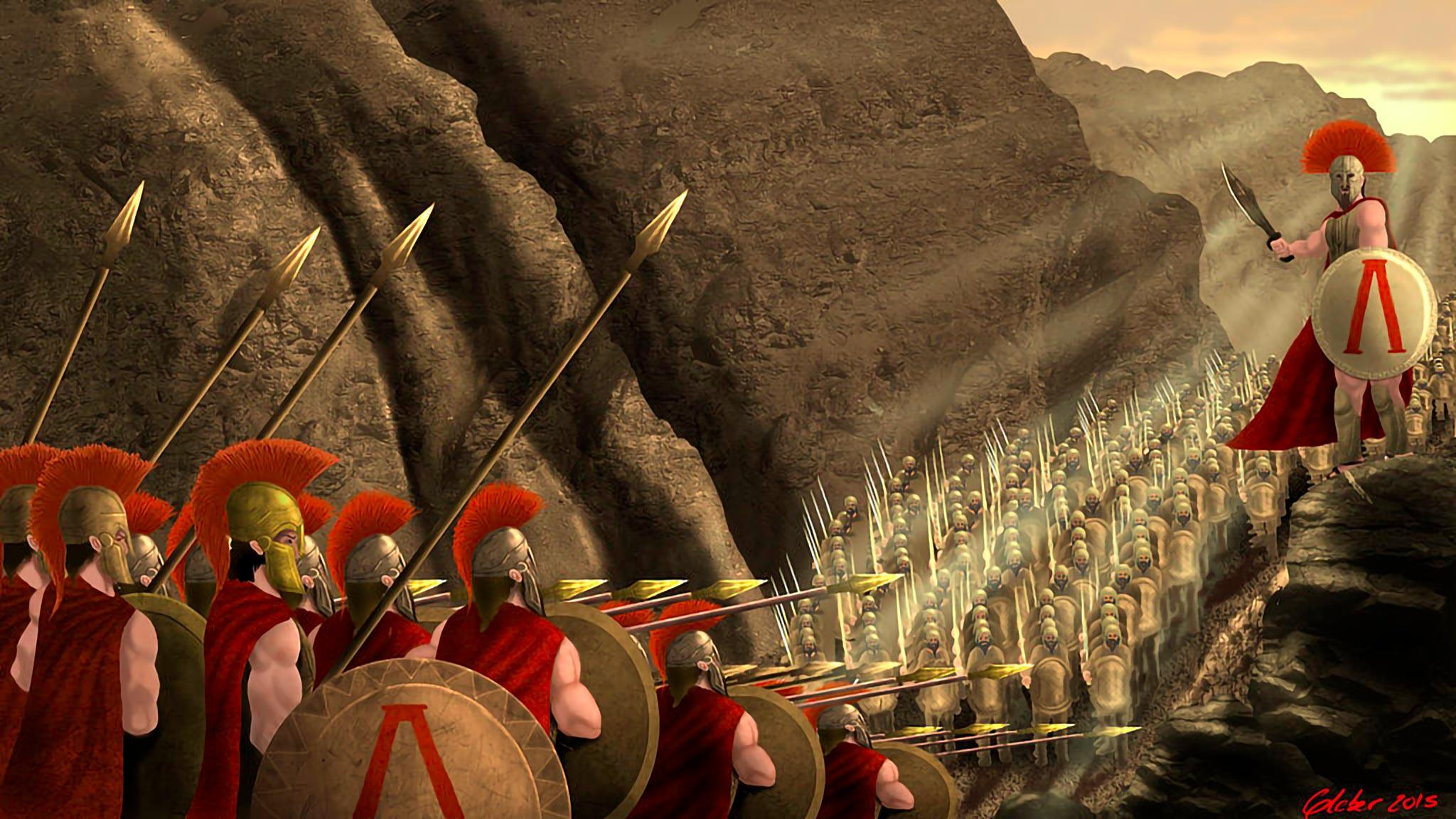
The Ancient Battle of Thermopylae: Heroes, Warriors, and Legends
The Battle of Thermopylae, a clash of civilizations etched into the annals of history, remains a potent symbol of courage, sacrifice, and the enduring human spirit. Fought in 480 BCE, this pivotal engagement during the Greco-Persian Wars pitted a vastly outnumbered coalition of Greek city-states against the might of the Persian Empire under King Xerxes I. While ultimately a tactical defeat for the Greeks, Thermopylae’s impact resonates through millennia, shaping military strategy, inspiring countless works of art and literature, and serving as a timeless metaphor for defiance in the face of overwhelming odds.
The Genesis of Conflict: The Persian Empire and the Greek World
To fully understand the significance of Thermopylae, we must first delve into the geopolitical landscape of the 5th century BCE. The Persian Empire, a sprawling behemoth encompassing vast swathes of the Middle East and beyond, was at the zenith of its power under Xerxes I. Driven by ambition and a desire to expand his empire’s reach, Xerxes set his sights on conquering the independent Greek city-states. These city-states, while often at odds with one another, possessed a shared cultural identity and a fierce commitment to their freedom.
The Persian invasions were not a sudden eruption of conflict but the culmination of decades of tension and skirmishes. Previous conflicts, including the Ionian Revolt, had exposed the inherent vulnerabilities of the Persian Empire and the determined resistance of the Greeks. Xerxes’ invasion was intended to be a decisive blow, crushing Greek resistance and bringing the entire Hellenic world under Persian dominion. The scale of the Persian army was unprecedented, a formidable force comprised of diverse ethnicities and military units, a testament to the vast resources and manpower at Xerxes’ disposal. Estimates of the Persian army’s size vary wildly, ranging from hundreds of thousands to well over a million soldiers, though more conservative estimates place the number closer to 120,000 to 180,000. Regardless of the exact figure, it was a force of unparalleled size compared to any army the Greeks had previously faced.
The Greek response was initially one of disunity. While some city-states, such as Athens, actively prepared for war, others hesitated or sought to appease the Persian king. However, the threat posed by Xerxes’ vast army and the looming prospect of Persian subjugation eventually spurred a level of inter-city cooperation rarely seen in ancient Greece. A pan-Hellenic alliance, though imperfect and fragile, was forged, with Sparta, the leading military power in the Peloponnese, assuming a crucial role in the defense efforts. This alliance, however, was not without its internal tensions and disagreements regarding strategy and leadership, foreshadowing the challenges that would later hinder their unified defense.
The Strategic Importance of Thermopylae: A Narrow Pass, A Decisive Stand
The narrow pass of Thermopylae, meaning “Hot Gates,” was selected as the primary defensive position against the Persian advance. This strategic location, situated on the eastern coast of Greece, was a natural chokepoint, forcing the invading army to funnel through a narrow passage bordered by treacherous cliffs on one side and the sea on the other. This geographical constraint minimized the Persians’ numerical advantage, effectively neutralizing their superior cavalry and allowing a smaller, well-disciplined force to hold them off.
The terrain of Thermopylae played a pivotal role in the battle. The narrow pass, only a few meters wide in places, severely hampered the Persian army’s ability to deploy its vast numbers effectively. The Greek forces, primarily composed of hoplites (heavily armed infantrymen), utilized their famed phalanx formation – a tightly packed shield wall of spearmen – to present an almost impenetrable front to the enemy. This formation, combined with the restricted space of the pass, transformed the battle into a brutal series of close-quarters engagements.
The Greek Defenders: A Coalition of Warriors
The Greek forces at Thermopylae were not a monolithic entity but a coalition of warriors representing different city-states, each with its own unique military traditions and political motivations. At the heart of this coalition were the Spartans, renowned throughout the ancient world for their rigorous military training, unwavering discipline, and fierce warrior ethos. Their training regime was legendary, starting from a young age and emphasizing physical endurance, tactical proficiency, and absolute obedience to authority. The Spartan hoplites, clad in bronze armor and wielding long spears, were among the most formidable infantrymen of their time.
Joining the Spartans were the Thespians, another Boeotian city-state known for its unwavering loyalty and participation in the defense of Greece. These warriors shared the Spartans’ commitment to fighting to the death, showing immense courage and determination during the battle. Their presence highlighted a nascent sense of Panhellenic unity, surpassing the usual inter-city rivalries and prioritizing the defense of their shared homeland.
In contrast to the unwavering loyalty of the Spartans and Thespians, the participation of the Thebans was less enthusiastic, reflecting the city’s more ambivalent attitude towards the wider Greek alliance. Some Theban contingents were openly sympathetic to the Persian cause, contributing to internal divisions within the Greek ranks. While they contributed fighters to the defense, their commitment was far less staunch, a fact that became apparent later in the battle.
Under the command of King Leonidas I, a Spartan king and a warrior of renowned reputation, the Greek forces were united by a common goal: to hold the pass and delay the Persian advance long enough for the rest of Greece to prepare for a wider defense. Leonidas’s leadership proved crucial, not only in coordinating the diverse elements of the Greek army but also in fostering a sense of unity and determination among his men. His strategic acumen, combined with his undeniable courage, inspired his troops and became a crucial element in the successful defense of the pass for the first two days of the battle.
The Persian Onslaught: Numbers and Tactics
The Persian army, a heterogeneous force drawn from across the vast empire, employed a range of tactics and strategies. Their military organization was highly sophisticated, but they encountered significant difficulties navigating the narrow confines of Thermopylae. The Persians’ initial assaults, characterized by waves of infantry attacks, proved ineffective against the well-organized Greek phalanx. The sheer scale of the Persian army, while providing a numerical advantage, also created logistical problems. The narrowness of the pass hindered the effective deployment of their forces, while supplying a large army in such a confined space proved challenging.
Despite the limitations imposed by the terrain, the Persians demonstrated remarkable tenacity and persistence. Repeated assaults, often involving massive numbers of troops, tested the Greek defenses relentlessly. The Persians deployed a wide array of units, from heavily armed infantry to lightly armed archers, cavalry, and even specialized siege engines, attempting to exploit any weakness in the Greek formations. They also used various tactical maneuvers, including flanking movements, trying to outwit the Greek defenders. However, initial attempts to break the Greek lines failed, testament to the Spartans’ prowess and the effectiveness of their defensive strategies.
The Treachery of Ephialtes and the Fall of Thermopylae
The initial two days of the battle resulted in staggering losses for the Persians, proving the Greeks’ capable defense. However, the Greek defense was ultimately broken by treachery. A local shepherd named Ephialtes, motivated by greed or perhaps resentment, revealed a hidden goat trail through the mountains that circumvented the main Greek defensive position. This clandestine path allowed a significant force of Persian troops to attack the Greeks from the rear. This devastating flanking maneuver shattered the Greek lines and destroyed the defensive strategy.
The final day at Thermopylae witnessed a desperate and bloody struggle as the Greeks, now surrounded and vastly outnumbered, fought to their last breath. While some units broke and attempted to retreat, many, including Leonidas and the majority of the Spartans and Thespians, chose to make a final, heroic stand. The Spartans’ unwavering commitment to their warrior ethos, their unflinching courage, and their discipline during the face of overwhelming odds contributed to their legend. The Battle of Thermopylae transformed into a symbolic sacrifice, a last-ditch effort to ensure the survival of other Greek forces, providing valuable time for further preparations. The fall of Thermopylae was a heartbreaking defeat but one steeped in undeniable heroism.
The Aftermath: A Pyrrhic Victory and a Legacy of Inspiration
The battle itself represented a tactical victory for the Persians. However, it was a costly one, with the Persians suffering substantial casualties. This victory, achieved through treachery, served to damage the moral authority of the Persian King and ultimately proved to be a Pyrrhic victory. The delay inflicted by the Greek defense bought valuable time, allowing the Greek city-states to further prepare for the continuation of the war. The heroic resistance of the Greeks at Thermopylae proved that the Persians weren’t invincible, galvanizing the other city-states and bolstering their resolve to fight on. The stories of the Spartan 300 and the other Greek warriors ignited a flame of resistance throughout Greece. This defiance fueled the later Greek victories at Salamis and Plataea, ultimately driving the Persian army from Greece.
The Battle of Thermopylae has had a profound and lasting impact on history, culture, and the human psyche. The story of the heroic defenders, their unwavering courage, and their ultimate sacrifice has transcended its historical context. It continues to inspire awe and admiration, serving as a testament to human resilience in the face of seemingly insurmountable odds. The battle’s legacy is visible in countless works of literature, film, and art, cementing its place as one of history’s most iconic military engagements.
Thermopylae’s Enduring Legacy: Symbolism and Modern Interpretations
The phrase “Molon Labe” (“Come and get them”), famously attributed to King Leonidas, has become a powerful battle cry, symbolizing unwavering defiance and resistance. It has been adopted by various groups and movements throughout history, reflecting the enduring power of the battle’s message. The legend of the 300 Spartans, while perhaps embellished over time, has taken on a life of its own, becoming a powerful symbol of courage, loyalty, and sacrifice. This heroic image, despite potential historical inaccuracies, resonated throughout history and continues to inspire even today. This narrative serves as a potent reminder of the human capacity for heroism and unwavering commitment to ideals.
The Battle of Thermopylae’s impact is not confined to the military realm. It has become a potent metaphor in political discourse, popular culture, and even sports, representing the struggle against overwhelming odds and the importance of fighting for what one believes in. The battle’s narrative has been adapted and reinterpreted countless times, demonstrating its remarkable capacity to resonate with diverse audiences and throughout various historical periods. The enduring appeal of Thermopylae lies in its capacity to transcend historical specifics and speak to universal human experiences, namely courage, sacrifice, and resistance against tyranny.
From ancient Greece to the modern era, the Battle of Thermopylae has continued to capture the human imagination, and its relevance remains undiminished. It is a story of courage and sacrifice, a testament to the power of human resistance against oppression, and a timeless reminder that even the smallest force can make a profound impact against the greatest of adversaries. The battle’s echoes continue to reverberate through history, inspiring future generations to stand up for what they believe in, regardless of the odds. The legacy of Thermopylae stands as a symbol of hope, resilience, and the enduring human spirit.


